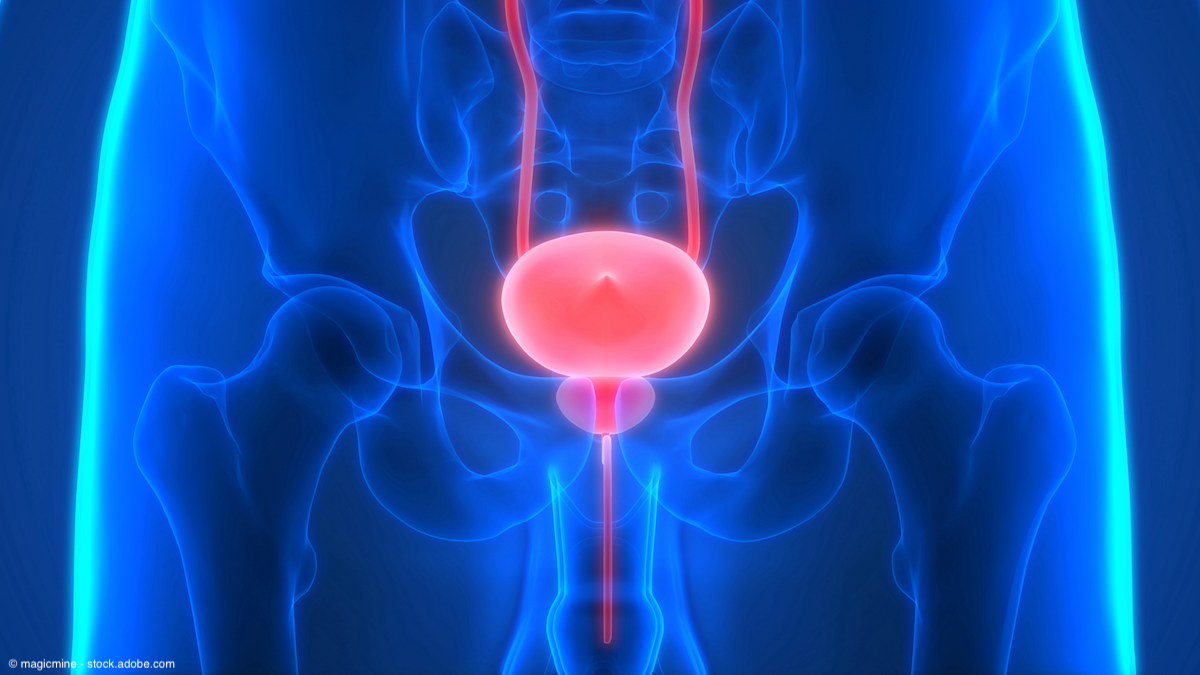News
Article
FDA accepts resubmission of BLA for N-803 in NMIBC
Author(s):
The FDA has accepted a resubmitted biologics license application (BLA) for N-803 (nogapendekin alfa inbakicep; Anktiva) for use in combination with BCG for the treatment of patients with BCG-unresponsive non–muscle-invasive bladder cancer (NMIBC) carcinoma in situ (CIS) with or without Ta or T1 disease, according to ImmunityBio, the developer of the IL-15 superagonist.1
The BLA for N-803 is based in part on findings from the phase 2/3 QUILT-3.032 trial (NCT03022825).

The company previously reported that on May 9, 2023, it had received a complete response letter from the FDA regarding its application for N-803, letting the company know that the BLA could not be approved in its current form. Under the Prescription Drug User Fee Act, the FDA is scheduled to decide on the BLA resubmission on or before April 23, 2024.
“We are pleased that the FDA has accepted ImmunityBio’s resubmission of the BLA as a complete response, following our productive interactions leading up to the resubmission. We look forward to working closely with the agency to finalize the review and to bringing this important immune-enhancing therapeutic to patients suffering from bladder cancer,” Patrick Soon-Shiong, MD, executive chairman and global chief scientific and medical officer, ImmunityBio, stated in a news release.
The BLA for N-803 is based in part on findings from the phase 2/3 QUILT-3.032 trial (NCT03022825). Results from the study presented at the 2022 AUA Annual Meeting showed that at a median follow-up of 23.9 months in patients with CIS, the complete response (CR) rate was 71% (95% CI, 60.1%-80.5%).2 The 12- and 24-month CR rates were 60% (95% CI, 45%-72%) and 52% (95% CI, 40%-65%), respectively.
QUILT-3.032 enrolled patients with historically confirmed BCG-unresponsive disease with persistent or recurrent CIS, with or without recurrent Ta/T1 disease, within 12 months of receiving sufficient BCG.
The population was divided into 2 cohorts: those with CIS (n = 83; cohort A) and those with papillary histology (n = 77; cohort B).
In the study, patients received 50 mg of intravesical BCG plus 400 µg of N-803 every week for 6 cycles followed by 6 cycles of maintenance therapy in patients who achieved CR for up to 2 years with the option to extend therapy. Patients who did not achieve CR but experienced response were allowed to receive another 6 cycles of re-induction with the combination.
The primary end point was CR at any time; secondary end points included duration of CR, cystectomy avoidance, and time to cystectomy. Safety end points included serious adverse effects (AEs) and immune AEs.
Regarding baseline demographics, the median age was 72.8 years in cohort A and 71.7 years in cohort B. Most patients were male and above the age of 65 years in cohorts A (87% and 84%) and B (74% and 74%), respectively. Most patients in cohorts A and B had an ECOG performance status of 0 (82% and 77%), followed by 1 (18% and 17%), and 2 (0% and 6%), respectively. The mean number of prior transurethral resections of the bladder tumor was 4 in both cohorts.
In terms of disease type, most patients in cohort A had CIS (70%), followed by CIS/Ta (19%), CIS/T1 (11%), high-grade Ta (0%), T1 (0%), and Ta/T1 (0%) disease. In cohort B, most patients had T1 (44%), followed by high-grade Ta (43%), CIS/T1 (5%), Ta/T1 (4%), and CIS/Ta (1%), and CIS (1%) disease.
The mean number of prior BCG doses was 16.6 in cohort A and 12.3 in cohort B.
Additional efficacy findings from cohort A demonstrated that the median duration of response (DOR) was 24.1 months (95% CI, 9.9–not reached). The percentage of patients whose DOR was at least 12, 18, and 24 months was 62% (95% CI, 48.0%-73.5%), 55% (95% CI, 40.1%-67.3%), and 52% (95% CI, 37.0%-64.9%), respectively.
In cohort A, the cystectomy rate was 7% in responders and 15% overall.
The 12-, 18-, and 24-month rates of bladder cancer–specific progression-free survival were 92% (95% CI, 83.4%-96.4%), 91% (95% CI, 81.2%-95.4%), and 91% (95% CI, 81.2%-95.4%, respectively. The bladder cancer–specific overall survival rate was 100%.
Regarding the efficacy in cohort B, at a median follow-up of 20.7 months in patients with papillary disease (n = 77), the median DFS was 23.6 months. The 12-, 18-, and 24-month DFS rates were 57% (95% CI, 44%-68%), 53%, and 48% (95% CI, 34%-60%), respectively. Further, 95% of patients (n = 73) avoided radical cystectomy, meeting the secondary end point for the cohort.
Notably, the efficacy of the combination was retained across all subgroups in both cohorts.
Regarding safety, the combination was well tolerated across both cohorts. Grade 1 and 2 treatment-related AEs (TRAEs) included dysuria (22%), pollakiuria (19%), hematuria (18%), fatigue (16%), micturition urgency (12%), chills (7%), bladder spasm (6%), pyrexia (5%), urinary tract infection (5%), noninfective cystitis (4%), nocturia (3%), diarrhea (3%), nausea (2%), positive bacterial test (2%), cystitis (2%), influenza-like illness (2%), and urinary tract pain (2%).
Grade 3 TRAEs occurring in less than 1% of patients included arthralgia, bacteremia, dysuria, encephalopathy, escherichia bacteremia, hematuria, myalgia, pain in extremity, pollakiuria, sepsis, urinary tract infection, and decreased urine flow.
No grade 4 or 5 TRAEs were reported.
The rate of serious TRAEs was 1%, there were no immune-related AEs, and only 3% of patients underwent a treatment-related discontinuation.
Notably, the activity of N-803 was localized to the bladder, and there were no systemic IL-15 levels per pharmacokinetic analysis.
References
1. FDA Accepts ImmunityBio’s BLA Resubmission as Complete and Sets New PDUFA Date. Published online and accessed October 26, 2023. https://immunitybio.com/fda-accepts-immunitybios-bla-resubmission-as-complete-and-sets-new-pdufa-date
2. Chamie K. IL-15RaFc superagonist N-803 with BCG in BCG-unresponsive non-muscle invasive bladder cancer (NMIBC) CIS and papillary cohorts. Presented at: 2022 AUA Annual Meeting; May 13-16, 2022. New Orleans, LA. PLLBA-01
Newsletter
Stay current with the latest urology news and practice-changing insights — sign up now for the essential updates every urologist needs.













